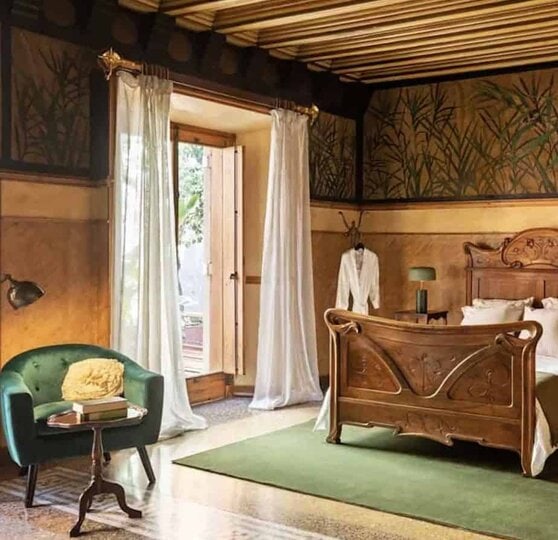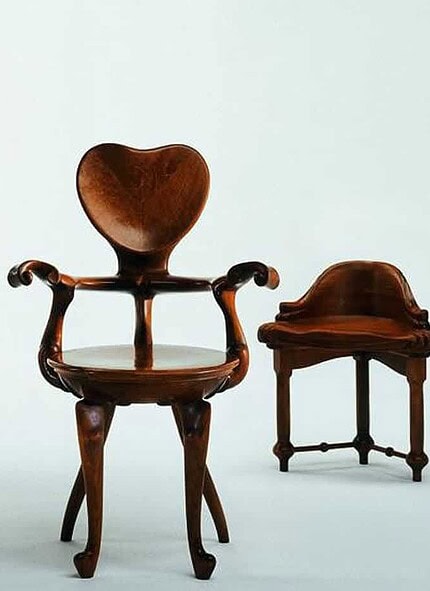Antoni Gaudí is world-renowned for his work as an architect in the beautiful Catalan city of Barcelona. A designer of genius, he marked the beginnings of modernism at the turn of the 20th century with no less than seven works listed by UNESCO as World Heritage Sites. However, there are fewer traces of the singular furniture he designed.
Decorative objects, design pieces and furniture by Gaudí are particularly rare on the art market.

Craftsmanship according to Gaudí
While working in a Catalonia in the midst of social, political and urban upheaval, Gaudí and his many collaborators also applied sophisticated working techniques. Since his architectural studies, he has been interested in various arts and crafts such as glassmaking, sculpture, metalwork, ceramics and plaster casting. A true innovator, he perfected, for example, a new stained glass technique to play with the intensity of light, as in Majorca Cathedral. Right from the start, he combined architecture and furniture design.
He has a broad vision of his work, and creates works that include everything from the design of the building to its smallest chair. He is attentive to finishing touches, and to a project’s entirety.

The Calvet chair
The ergonomic design of the backrests of his chairs and sofas demonstrate Gaudí’s constant concern for comfort. He looks for solidity and uses solid wood such as oak for this armchair from casa Calvet. Nature is a constant source of inspiration for him, and he uses the nobility of its materials as he observes its harmony. The furniture’s relief and wave-like design allows it to hug the human body. This aspect of his creations marks an advent in the way furniture was imagined at the time, when functionality had previously predominated.

With Gaudí, furniture is as important as the space that contains it. He wants his furniture to fit in perfectly with its surroundings. And in the few surviving drawings of his models and furniture pieces, we note what characterizes all his art: space, color, form and balance.
“I still don’t know whether we’ve given this diploma to a madman or a genius, only time will tell” Elies Rogent